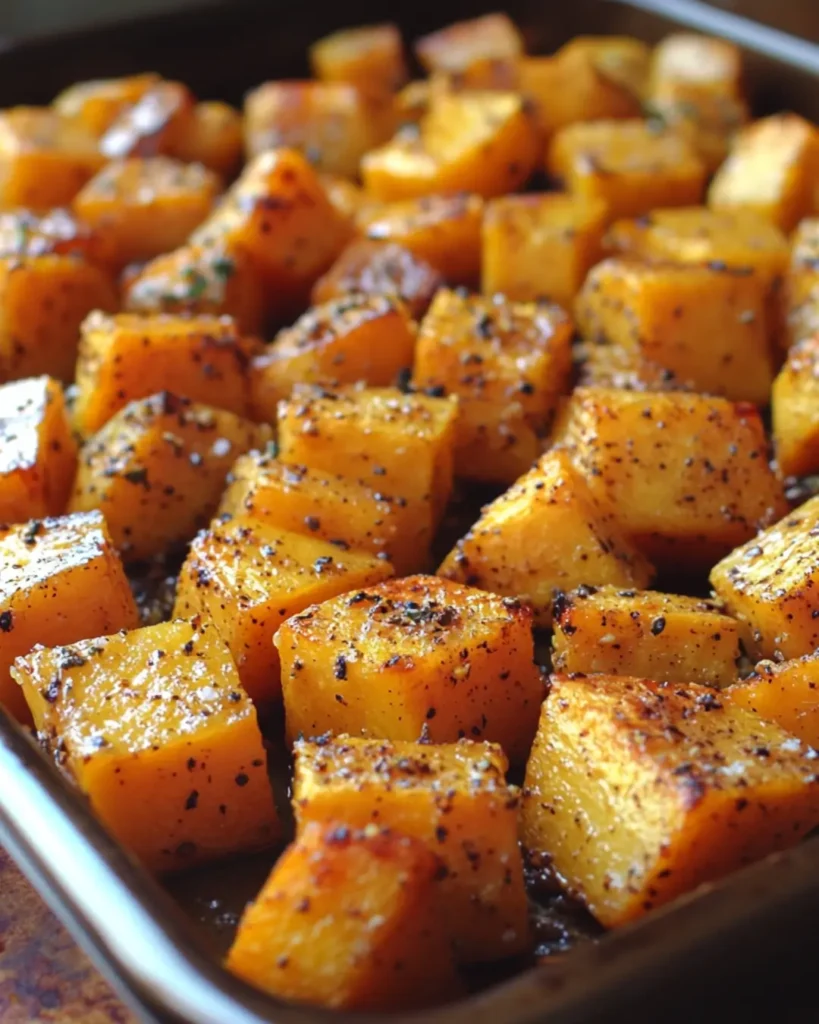Ultimate Guide to Roasted Butternut Squash with 4 Flavor Options
Roasted butternut squash is a versatile, nutritious, and downright delicious dish that can be customized to suit any palate. Whether you want a savory side, a sweet treat, or something with a spicy kick, this recipe delivers! In this article, we’ll dive deep into the steps, tips, and four unique flavor profiles to make your roasted butternut squash an unforgettable dish.

Why Choose Roasted Butternut Squash?
Roasted butternut squash is a crowd-pleaser that checks all the boxes. Here’s why it’s worth making:
- Nutrient-packed: Rich in vitamins A, C, potassium, and fiber.
- Versatile: Works as a side dish, a salad topping, or even a main course.
- Customizable: Four flavor options to cater to any occasion or taste.
- Easy to prepare: Minimal ingredients and simple steps for a restaurant-quality dish.
Ingredients You’ll Need
Before diving into the method, here’s what you’ll need to prepare roasted butternut squash:
- 1 medium butternut squash: Choose one that’s firm and heavy for its size.
- 2 tablespoons olive oil: Ensures crisp and golden-brown edges.
- Salt and pepper to taste: The foundation for any flavor profile.
Flavor Add-ons (Optional)
To take your roasted butternut squash to the next level, you can choose from these four unique flavor profiles.
- Garlic Herb: Perfect for a savory, aromatic twist.
- 1 teaspoon garlic powder
- 1 teaspoon dried thyme
- 1 teaspoon dried rosemary
- Cinnamon Maple: For a warm, sweet flavor ideal for fall.
- 1 teaspoon cinnamon
- 1 tablespoon maple syrup
- Chili Lime: Adds a zesty, spicy kick.
- ½ teaspoon chili powder
- Zest of 1 lime
- Fresh lime juice for serving
- Parmesan & Balsamic: A tangy and cheesy combination.
- 1 tablespoon balsamic vinegar
- ¼ cup grated Parmesan cheese
Step-by-Step Instructions
1. Prepare the Butternut Squash
- Trim the ends: Start by cutting off both ends of the squash with a sharp knife.
- Peel the squash: Use a sturdy vegetable peeler to remove the tough outer skin.
- Cut and deseed: Slice the squash in half lengthwise and scoop out the seeds with a spoon.
- Dice or slice: Depending on your preference, cut the squash into cubes for easy roasting or slices for a decorative presentation.
2. Preheat the Oven
Set your oven to 400°F (200°C). This temperature ensures the squash roasts evenly, turning tender on the inside and slightly caramelized on the outside.
3. Season the Squash
Place the cubed or sliced squash in a large mixing bowl. Drizzle with olive oil, sprinkle with salt and pepper, and toss to coat evenly.
Optional: Add Flavor Enhancers
Select one of the four flavor profiles and incorporate the additional ingredients during this step:
- Garlic Herb, Cinnamon Maple, Chili Lime, or Parmesan & Balsamic.
4. Arrange on a Baking Sheet
Spread the squash in a single layer on a parchment-lined baking sheet. Avoid overcrowding, as this prevents proper caramelization.
5. Roast the Squash
Place the baking sheet in the preheated oven and roast for 25-30 minutes, flipping the squash halfway through to ensure even browning. The squash is ready when it’s tender and golden brown.
6. Serve and Enjoy
Remove the squash from the oven and let it cool for a few minutes. If using flavor profiles like Chili Lime or Parmesan & Balsamic, add the finishing touches (lime juice or Parmesan) before serving. Enjoy warm as a side dish or add it to your favorite salads, grain bowls, or soups.
Flavor Variations Explained
Garlic Herb Roasted Butternut Squash
This savory variation is perfect for pairing with roasted meats or as a side for Thanksgiving dinner. The combination of garlic, thyme, and rosemary gives it a rich, aromatic flavor.
Cinnamon Maple Roasted Butternut Squash
Ideal for fall or winter, this variation adds a sweet and comforting touch. The cinnamon and maple syrup complement the natural sweetness of the squash, making it a hit at holiday gatherings.
Chili Lime Roasted Butternut Squash
For those who enjoy a bit of heat, the Chili Lime version is a must-try. The spice from the chili powder balances perfectly with the tangy lime zest and juice, creating a bright and bold flavor.
Parmesan & Balsamic Roasted Butternut Squash
This version is a fusion of tangy and savory. The balsamic vinegar caramelizes during roasting, and the Parmesan adds a nutty, cheesy finish that’s irresistible.
Tips for Perfect Roasted Butternut Squash
- Choose the right squash: Look for a squash that feels heavy and has a matte skin. Avoid ones with soft spots or shiny skin.
- Uniform cuts: Ensure the pieces are similar in size to guarantee even cooking.
- Don’t skip flipping: Flipping halfway through roasting prevents one side from burning and ensures even caramelization.
- Customize the texture: Roast for a shorter time for firmer squash or longer for softer, melt-in-your-mouth results.
Serving Suggestions
Roasted butternut squash pairs wonderfully with:
- Protein: Serve alongside grilled chicken, pork chops, or baked salmon.
- Salads: Toss it into a spinach salad with cranberries and feta.
- Soups: Use as a topping for creamy butternut squash soup.
- Grain Bowls: Combine with quinoa, kale, and a drizzle of tahini for a nourishing bowl.
FAQs
1. Can I make this recipe ahead of time?
Yes! Roasted butternut squash can be made up to 3 days in advance. Store it in an airtight container in the refrigerator and reheat in the oven at 350°F until warmed through.
2. How do I prevent my squash from becoming mushy?
Ensure the squash is spread out in a single layer on the baking sheet and avoid overcrowding. This allows it to roast rather than steam.
3. Can I freeze roasted butternut squash?
Absolutely! Let the squash cool completely, then store it in a freezer-safe bag or container for up to 3 months. Reheat directly from frozen in the oven.
4. What’s the best way to peel butternut squash?
A sharp vegetable peeler works best. Start at the top and peel downwards, removing all the skin and the white layer underneath.
5. Can I use different squash varieties?
Yes, you can substitute butternut squash with acorn squash, kabocha squash, or even sweet potatoes for similar results.
This comprehensive guide will help you master Roasted Butternut Squash with ease. Whether you’re cooking for a crowd or enjoying a cozy dinner at home, this dish will elevate your meal. Let me know if you’d like further customization!
